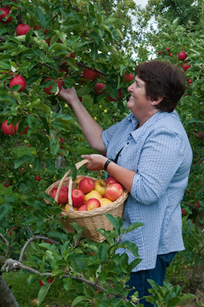Product and Experience Development – Important Differences You Need to Know
By Kim Clarke, Tourism Experience Development Specialist, RTO7
The first question you might be asking yourself is: isn’t product and experience development the same?
Well, the answer is really yes and no. There are a lot of the same elements that go into both areas including determining a theme, thinking about target audiences, thinking about if there is potential for collaboration and packaging and what kind of collateral you might need like maps or brochures.
Here are some definitions to help you out.
 A PRODUCT
A PRODUCT is defined as a good, activity or service that is delivered to consumers with a moderate level of differentiation, is available to a fairly wide market and is focused on more cost-based pricing or is free. Some examples of product development include a self-guided touring route or guided interpretive hike through a park.
VS.

An EXPERIENCE. According to Dr. Nancy Arsenault, experiential travel engages visitors in a series of memorable travel activities, revealed over time, that are inherently personal, engages the senses and makes connections on an emotional, physical, spiritual, social or intellectual level
[1]. Some great examples of experiences would include writing a song with a Juno award winning songwriter, a behind the scenes tour at a museum where you can touch important historical objects or forging for wild mushrooms with a local guide and using them to cook a soup for lunch.
Think about this. You can go to a restaurant and have a delicious meal with great customer service and be completely satisfied. You might not tell anyone about it or even think about it again. Now, take that great restaurant and add in a hands-on component, a visit into the kitchen to meet the chef or some really great storytelling from the host and you have an experience that you might be more willing to share with your friends, family and social media network. These are the things that made you say “Wow, that was cool.”
There are a few other subtle differences between products and experiences as well. Product development might also involve investments in infrastructure like buildings or larger pieces of equipment. Experiences often take other people’s existing infrastructure and animating the space. Experiences are more focused on the interactions with people and create a deeper emotional connection.
Think about this. Could you use products as the foundation of your business and experiences as the additional value-added pieces for smaller, niche markets to gain a higher yield per customer AND in a time when you have excess capacity?
Product and experience development could also be an opportunity to create partnerships and collaborations to offer something new and engaging for visitors. It could be a new way to see an attraction or finding a unique way for visitors to connect to a place in a more authentic way.
Ultimately, it’s about finding ways to encourage visitors to stay longer, return more often and increase the economic impact they leave behind.
Need more info on or have questions about Experience Development?
Contact Kim Clarke, Tourism Experience Development Specialist at
kclarke@rto7.ca or 519-379-2506.
[1] Nancy Arsenault (2004).
Defining Tomorrow’s Tourism Product.